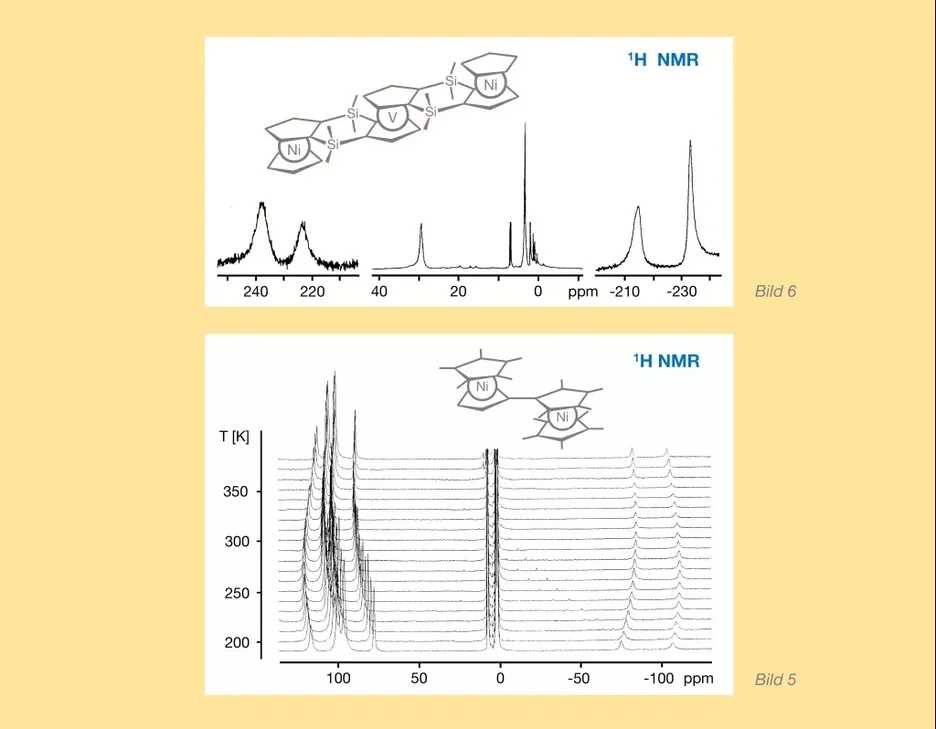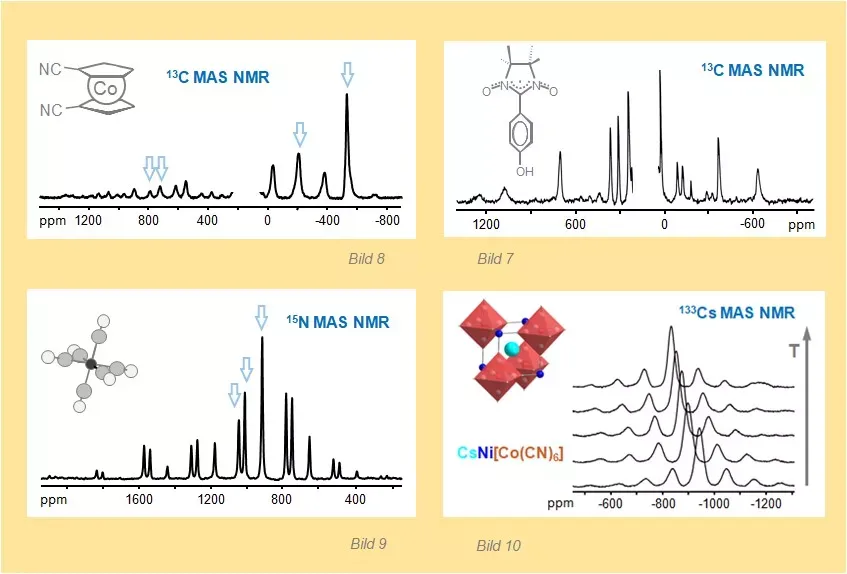NMR SPECTROSCOPY OF PARAMAGNETIC COMPOUNDS - in solution
The application and further development of the NMR method has included studies of paramagnetic molecules in order to determine
- Molecular structures (e. g. Figure 6 from ref. 113, see also refs. below)
- Magnetic interactions (e. g. Figure 5 from ref. 136, see also refs. 50, 68,90, 93, 104, 111, 121, 122, 152, 154)
- High-spin/low-spin equlibria (e. g. refs. 73, 102, 164)
- Isotope effects (isotope shift, refs. 37, 91; signal narrowing, refs. 89, 105, 114, 121)
- Dynamic structural behavior (refs. 64, 93, 129, 159)
- Chemical equilibria (e. g. refs. 74, 102, 115)
- Electron spin delocalization (e. g. refs. 24, 48, 102, 125, 129, 132, 135, 139, 156, 160, 161, 163)

NMR SPECTROSCOPY OF PARAMAGNETIC COMPOUNDS - in the solid state
Magic angle spinning (MAS) NMR studies of solid paramagnetic compounds have been carried out on
Organic radicals (see Figure 7 from ref. 129; see also refs. 142 and 143 - 147)
Organometallics (see Figure 8 from ref. 154; see also refs. 116, 119, 135, 137, 139, 152)
Hexacyanometalates (see Figures 9 and 10 from refs. 143 and 161; see also ref. 155)
The aim was to investigate genuine (undiluted) microcrystalline magnetic solids as would be desirable for related materials. Some promising results are the straightforward detection of small spin densities and their sign in high resolution. In addition, the local geometric and magnetic structure and its disorder are accessible.

Multinuclear NMR spectroscopy
Besides 1H and 13C the NMR studies have included the following nuclei
| Nucleus | Entry of publication list | Nucleus | Entry of publication list |
| 2H | 89, 91, 102, 105, 114, 121, 122, 123, 129, 137 | 31P | 11, 66, 70, 101, 120, 139, 146 |
| 6/7Li | 94, 151 | 71Ga | 71 |
| 11B | 164 | 113Cd | 155, 158 |
| 14/15N | 78, 143, 160, 163, 164 | 119Sn | 57, 58, 78, 80, 86, 87, 94, 107, 151 |
| 19F | 101, 139 | 133Cs | 148, 161 |
| 27Al | 70 | 207Pb | 107 |
| 29Si | 31, 42, 66, 97, 99, 103, 107, 111, 112, 113, 115, 138, 150, 151 |